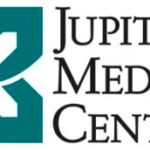 An estimated 10 to 20 percent of patients who suffer from a new stroke find they have symptoms when they wake up or when another member of the household discovers the person is in medical difficulty. While time is a critical element for treating strokes, the challenge of treating patients with stroke on awakening (SOA) is greater because it is impossible to know how much time has elapsed since onset.
An estimated 10 to 20 percent of patients who suffer from a new stroke find they have symptoms when they wake up or when another member of the household discovers the person is in medical difficulty. While time is a critical element for treating strokes, the challenge of treating patients with stroke on awakening (SOA) is greater because it is impossible to know how much time has elapsed since onset.
Neurointerventional radiology procedures featuring leading-edge technology have recently increased the zero-to-three hour window of intravenous acute stroke treatment to eight hours for those in the midst of suffering a stroke. Patients whose symptoms are caused by a massive, occluding blood clot and arrive too late for intravenous therapy may now be able to have the clot identified and removed. Unfortunately, up until now, many of the stroke patients were not eligible for the clot removal procedure because – if the stroke was not witnessed – there were no tools to tell when the stroke happened, how much brain can be saved with such a procedure and how much is the risk of bleeding, an unwelcome complication of the procedure if it’s done too late.
With breakthrough CT technology, the exact time of stroke can be estimated and brain areas that can be recovered with intervention can be mapped in the case of SOA patients. This technology guides acute removal of the occluding blood clot, with the promise of much better outcome for over half of the patients waking up with the signs of a severe stroke.
Facilitating such a scientific breakthrough is the Philips Brillance iCT 256-slice scanner, now available at Holy Cross Hospital in Fort Lauderdale. Its advancements include:
• rotational speeds of up to 0.27 seconds to enhance image quality for emerging applications such as cardiac imaging;
• extended longitudinal coverage realizing up to 256 slices enabling the efficient collection of cardiac and perfusion imaging;
• a powerful X-ray tube for enhanced spatial resolution and greater imager fidelity;
• Nano-Panel detectors which reduce electronic noise and offer better definition of the small structures needed for coronary artery and brain perfusion studies;
• an interface which allows clinicians to access and manipulate high-quality images wherever they are, potentially speeding the time to diagnosis; and
• the ability to delivering greater dimensions and depth across a range of clinical areas in addition to brain perfusion and cardiac CT such as head and neck angiography, full field of view lung studies, abdominal/pelvic imaging and virtual colonoscopy.
The Philips Allura Xper FD20/20 currently utilized in treating patients at Holy Cross Hospital is another vital development in the treatment of strokes. The biplane neuro X-ray system has two large flat detectors providing full body coverage for vascular applications and it allows “real-time” 3D reconstructions of soft tissue, bone structure and other body structures at a resolution four times greater than conventional X-ray systems.
These new advances offer physicians the means with which to locate clots with unprecedented accuracy and conduct minimally invasive procedures to treat a wide range of clinical problems including stroke, carotid artery disease, brain aneurysms and other vascular disorders. Depending on the patient, these procedures can reverse the effects of a stroke and reduce the time spent in the hospital.
Naturally, there are limits to what technology can do. Holy Cross Hospital has joined other hospitals around the country to offer clinical trials for patients suffering acute ischemic stroke. This will include an upcoming multicenter randomized trial for patients who present beyond the typical eight-hour therapeutic window, including the previously mentioned SOA events.
Hospitals and their stroke teams around the country should have appropriate protocols that facilitate prompt transfer to Comprehensive Stroke Centers in order to ensure that SOA patients receive the highest quality care as quickly as possible to shorten the window of time from onset to treatment.

























